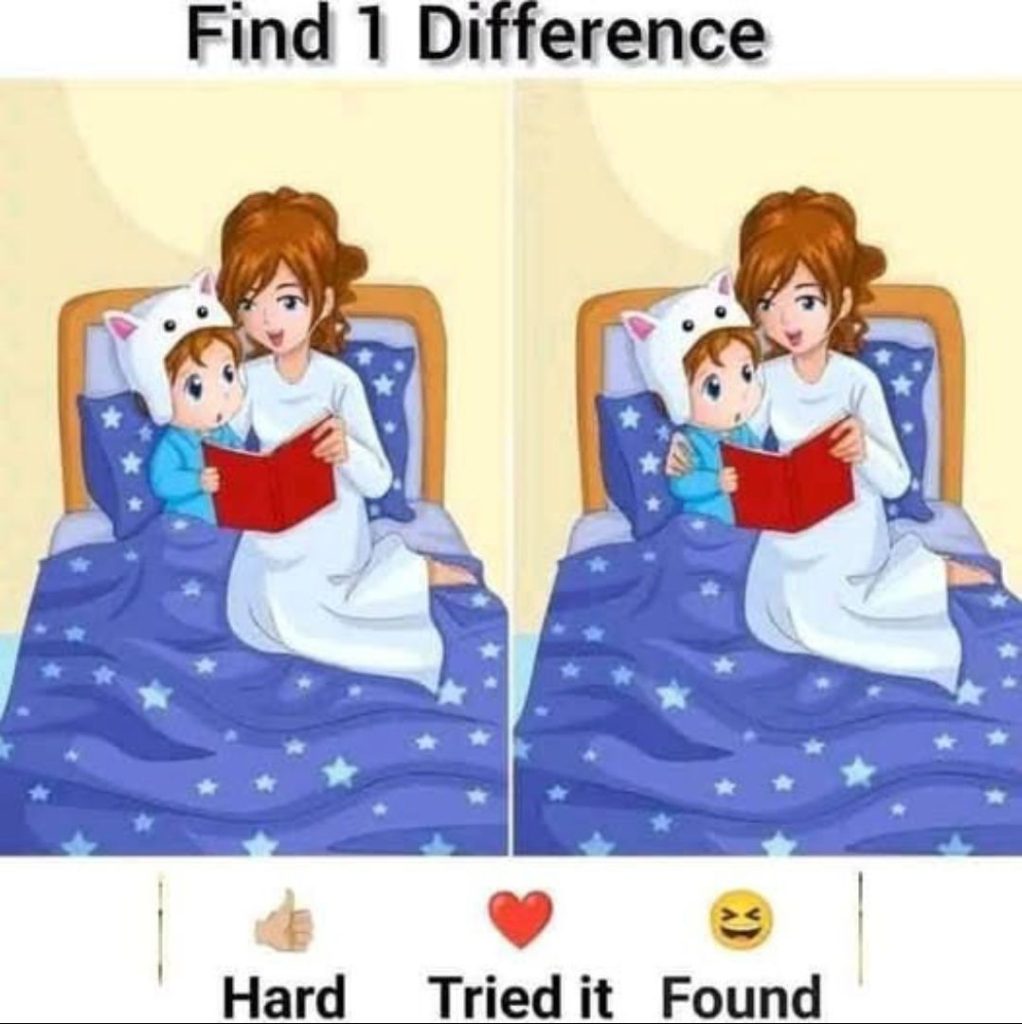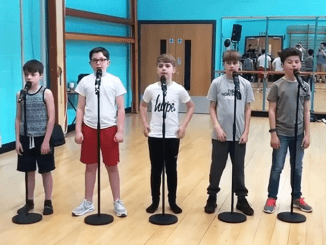There’s nothing quite like a classic “find the difference” puzzle to get your brain ticking and your eyes laser-focused. Today, we’re serving up a charming challenge that seems simple at first glance—but don’t be fooled. Hidden within this wholesome image of a mom and her child is one sneaky detail that sets the two pictures apart. Your task? Find it!
So, are you ready to give your mind a mini workout? Let’s dive in.
Why These Visual Puzzles Are Good for You

You might think you’re just having fun, but spot-the-difference games are surprisingly great for your brain. They help train your attention to detail, boost visual memory, and even improve your ability to concentrate. Whether you’re scrolling through social media or sipping your morning coffee, taking a few minutes to challenge your brain like this is always a win.
Plus, let’s face it—it’s oddly satisfying to finally spot that one hidden change.
Most People Miss the Obvious. Here’s Why
These puzzles can be trickier than they seem, and there’s a good reason for that. Our brains are wired to recognize patterns and fill in gaps. So when we see two nearly identical images, we assume they’re the same unless something major stands out. That’s why people often overlook the most obvious difference—it’s hiding in plain sight.
Here are some common mistakes:
- Only scanning the center of the image
- Overlooking body language and subtle hand positions
- Getting distracted by unnecessary details like background stars or pillows
Video : 【Spot the Difference】🌟 Star Gazer’s Challenge: Find 3 Cosmic Changes
Breaking It Down: How to Solve the Puzzle
Let’s analyze both images side by side. The setting is warm and cozy—a mom reading to her child in bed, both wearing pajamas, the stars on the blanket shining brightly.
So where’s the difference?
Step 1: Check the Overall Layout
No change in background, blanket pattern, or character position. The mother and child look nearly identical in both images.
Step 2: Focus on Body Language
Zoom in (mentally or physically) on how the mother is holding the child.
Step 3: Look at the Mother’s Hand
Here’s the twist—in the left image, the mother’s arm wraps around the child, with her hand clearly visible resting on the child’s arm. But in the right image, her hand is missing! That tender, comforting touch is completely gone.
Correct Answer: The Mother’s Hand Is Missing in the Right Image
That’s the single, subtle difference! The mother’s supportive hand disappears in the second image, making it the only visual change between the two. It’s not flashy, but once you see it, you can’t unsee it.

Why That Tiny Detail Matters
The absence of the mother’s hand is a detail so small it’s easy to overlook. But this one tiny element plays a big role in the emotional tone of the scene. Her hand adds warmth, safety, and connection. Without it, the image feels ever-so-slightly incomplete—even if you don’t consciously realize why.
That’s the power of small visual cues—they can totally change how we interpret a moment.
Engage Your Friends: Who Can Spot It Fastest?
Now that you’ve cracked the case, it’s your turn to challenge others. Share this puzzle with a friend or post it to your story. See who notices the missing hand and who scrolls past scratching their head. You’ll be surprised how many people miss it!
Better yet, comment below:
- Did you find the difference quickly?
- How long did it take you?
- Were you fooled at first?
Let’s turn this into a fun challenge thread and see who really has eagle eyes.
Video : 【Spot the Difference】🧠 Very Difficult Puzzles! Test Your Brain Power Now!
Final Thought: It’s All in the Details
If this puzzle taught us anything, it’s that the tiniest things often make the biggest difference. From a mother’s touch to a missing hand in a drawing, details matter more than we realize. So keep training your brain, sharpening your senses, and having a blast with visual puzzles like this.
Don’t stop here—there are countless other “spot the difference” games waiting for you. They’re fun, free, and fantastic for your focus.
Until the next brain teaser—happy puzzling!


